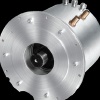|
Hybrid Electric Vehicles
A well functioning and efficient transport sector is a requirement for economic and social
development, bringing people together and enabling the trade and exchange of goods
and ideas. However, the transport sector is also responsible for a number of negative social
and environmental effects, including a significant contribution to global greenhouse gas
emissions and air pollution. A global shift to a greener, low carbon economy will require
significant improvement in the ways in which energy is produced and used. The transport
sector uses over a quarter of the world’s energy and is responsible for a comparable share of
global CO2 emissions from fossil fuel combustion. This will require both systemic and more
specific technological solutions, such as: smart growth urban planning for fewer motorized
trips, increased modal share of non-motorized and public transport, shifting incentives to
more efficient and less polluting modes and technologies, and taking advantage of best
available and most fuel and energy efficient technologies.
The global light duty vehicle fleet is expected to triple by 2050, with most (around 90%)
of the growth to take place in developing and transitional countries. Therefore, special
attention needs to be paid to controlling the fleet sizes and composition on a global level
in the medium and long term. When exploring solutions to lower road transport emissions
and improve fuel efficiency, policy makers, industry, and consumers often look to technology
that has proven to be cost effective. Hybrid electric vehicles, along with other cleaner vehicle
technologies, are increasingly on the list of options.
This report is an introductory review of hybrid electric vehicle (HEV) technology and its
use in expanding markets in non-OECD countries. A HEV uses both an electric motor with
both a battery and a combustion engine with a fuel tank for propulsion; hence, a hybrid
between an electric and a conventional vehicle. While not fully electric vehicles, HEVs are
realistically a bridging technology in developing and transitional countries and markets. Their
increasing share in the global fleet is a move toward greater eventual fleet electrification (via
the use of plug-in hybrids – or PHEVs - and pure electric vehicles - EVs) as HEVs require no
infrastructure changes – e.g. electrical grid modification or special fueling stations. This is why
HEVs are of particular interest now, even as countries struggle with fuel quality (e.g. sulphur
levels), the adoption of very clean diesel technology, and the sustainable use and production
of liquid biofuels.
Hybrid passenger cars have been on the market since 1997, with hybrid buses and delivery
trucks emerging in the last 3-4 years. Widespread use in industrialized markets is now leading
to use in developing countries through second hand markets.
HEV technology, albeit more expensive than conventional vehicles, is poised for entry into
new markets. This will present a number of opportunities and advantages, given that the right
policies and complementary standards (including fuel quality standards) are in place and
policy makers, industry groups, consumers, and vehicle maintenance providers are sufficiently
informed and have realistic expectations of HEV technology. It is also important to consider
that HEVs are not the only clean vehicle option available today. Cleaner diesel vehicles,
compressed natural gas (CNG) vehicles, and vehicles that run on liquid biofuel blends are also
viable alternatives for reducing air pollution and greenhouse gas emissions. In addition, HEVs
are not necessarily fuel specific; this technology is versatile and can be applied to CNG, diesel,
and flexi fuel vehicles.
read more
|
|
Какъв автомобил бихте закупили?

|
Декември 2025
|

|
|
| Нед |
Пон |
Вто |
Сря |
Чет |
Пет |
Съб |
| | | | | | | | | | | | | | | | | | | | | | | | | | | | | | | | | | | |
|














